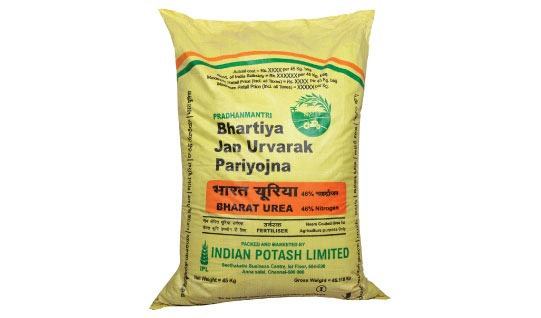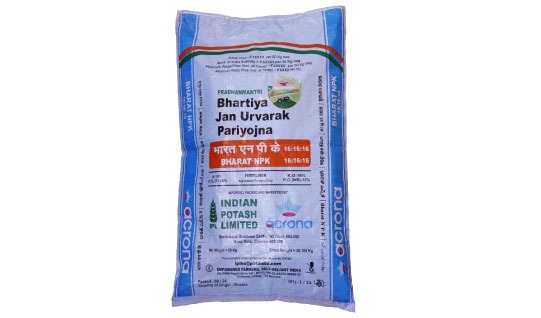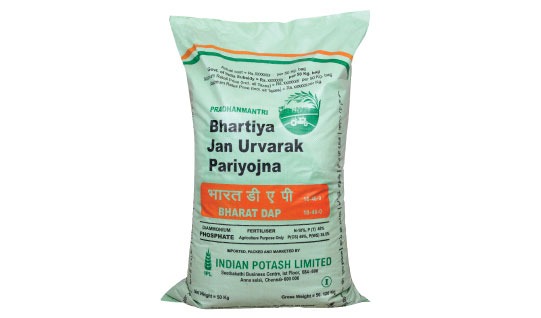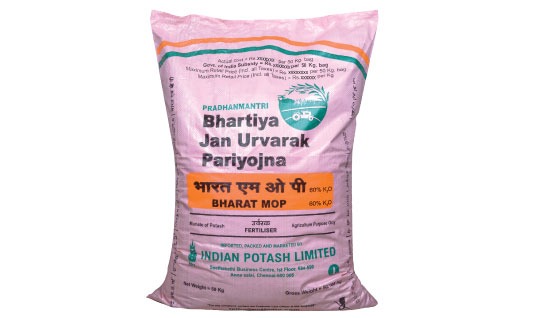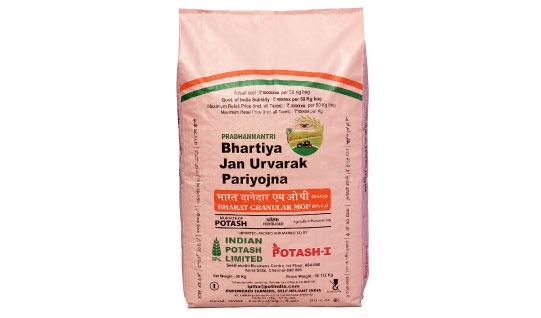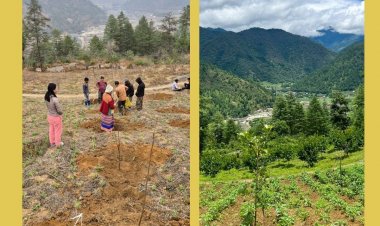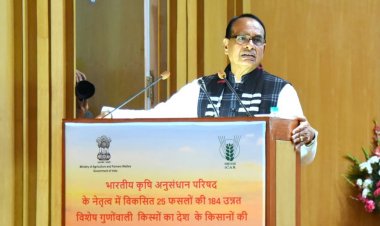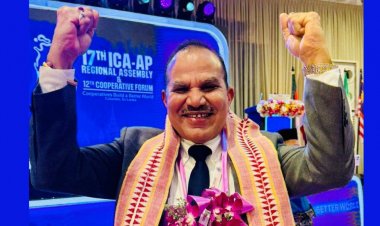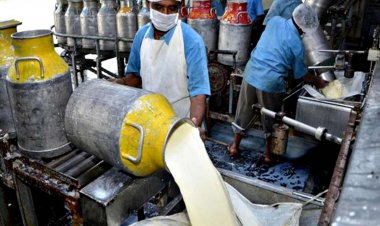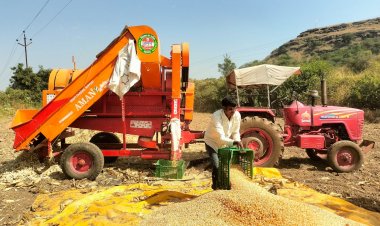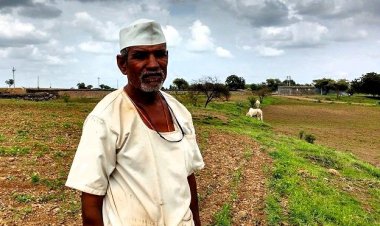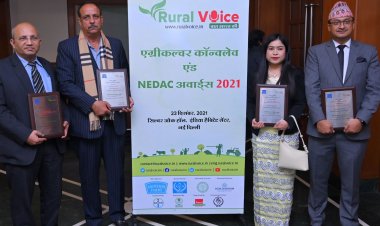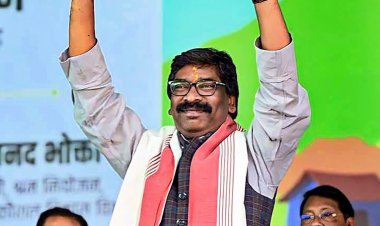Where Panchayats Stand after 30 years of Implementation of 73rd Amendment Act?
Despite 30 years since the 73rd Constitutional Amendment, Panchayats remain weak and underpowered.

Panchayats have been more than 30 year old by now after 73rd constitutional amendment Act, 1993 in which they have been made as institutions of self -governments meaning thereby they should work as autonomous bodies having clearly defined functions, adequate funds to meet out functions and sufficient functionaries to perform different functions in stipulated time frame.
They should have been vibrant and pulsating institutions across the country. But their examination and assessment in the form of devolution to them revealed that they are so mal-nourished and underweight that they could not address the issues they are supposed to do in the countryside due to lack of powers and authority.
However, there are some silver lines in the gloomy picture, when one sees that some states like Karnataka (72.23 %), Kerala (70.59%) and Tamil Nadu (68.38%) where devolution is near to expected 100%. This article presents the spatial pictures of devolution across states/UTs and says how it so happened.
In this context, it becomes relevant to study as to what extent these institutions have been empowered in the form of functions, finances, functionaries and other relevant subjects. In this regard, in 2024, the Ministry of Panchayati Raj, Government of India, examined the health of Panchayats with the help of the study on Status of Devolution to Panchayats in States by the Indian Institute of Public Administration, New Delhi.
Their health status or devolution has been measured using devolution index covering six dimensions namely (i) Framework (D1), Functions(D2), Finances (D3), Functionaries(D4) (iv) Capacity Building (D5) and Accountability (D6). Individual dimensions have been allotted different weights. Except Framework (10) and Finances (30), each indicator has been allotted 15 per cent weight. Let us see to what extent Panchayats have become autonomous institutions of local governance.
Before proceeding further, let us make aware readers what are the sub-indices in different dimensions. The data with regard to devolution has been categorised in three streams namely General Category States, Northeastern/Hilly States and Unions Territories. ‘Framework’ (D1) dimension refers to constitutional provisions given in the 73rd Amendment Act and their nature is mandatory for the implementation. In other words, these provisions have to be put into practice compulsorily by the States. These are: (i) holding regular elections, (ii) reservation of seats and offices for women, SCs and STs in Panchayats (iii) constitution of State Finance Commission (iv) constitution of State Election Commission at regular interval (iv) Setting of District Planning Commission.
The study shows that the national level rank of this dimension is 54.29 per cent, while it is supposed to be 100 percent because there is no space given in the constitutions about the non- implementation of this dimension. Across the states, Kerala ranks the first with 83.56 per cent per cent and Puducherry ranks the lowest with 9.31 per cent. It is pathetic to note that none of the State/UT implemented the mandated provisions of the 73rd Amendment Act in letter and spirit.
Functions (D2) include activities transferred to Panchayats or activity mapping, expenditure assignments, involvement of Panchayats in performing various activities and role of Panchayats in the implementation of the major schemes. It is disheartening to note that the national average index of devolution of functions is merely 29.9 per cent. If seen across the states, it is found that Tamil Nadu (60.24) is on the top and Goa is on the lowest (6.63) rug on this count.
Under Finances dimension (D3) grant of 15th Finance Commission to Panchayats, State Finance Commission grant to Panchayats, empowerment of Panchayats to impose and collect revenues, own funds of Panchayats and efforts made by Panchayats for finance, accounts and budgets. On this dimension national level at aggregate level merely 37.04 devolved. Across the States/UTs, Karnataka is on the top (70.65) and the Lakshadweep is on the lowest level (3.99).
Functionaries (D4) includes physical infrastructure of Panchayats, e-connectivity of Panchayats and Panchayats’ officials sanctioned and in position. The position of this dimension at national level is merely 50.96 per cent. Across the states/UTs, it is the highest (84.29) in Tamil Nadu and the lowest (8.20) is in Punjab.
Capacity Building (D5) dimension comprises training institutions and training activities in the form of training imparted to elected and officials of Panchayats. On this, the study indicates that the national average is merely 54.63 per cent. In the States/UTs the highest figure (86.19) is in the Telangana State and the lowest (8.57) is in the Dadra & Nagar Haveli and Daman & Diu.
The Accountability dimension (D6) includes accounting and audit of Panchayats, social audit, functioning of gram sabha, transparency and anti -corruption and Panchayats Assessment & Incentivisation. With regard to this dimension, study shows that the national average is merely 47.51. Even not to cross the 50 marks. States/UTs wise, it is found that the highest figure (81.33) is in case of Karnataka followed by Kerala (81.18) and the lowest is in (27.43) Ladakh.
The sum of all dimensions (overall devolution to Panchayats or composite index of devolution) shows that at national level merely 43.89 per cent devolution has been achieved in the country. This indicates the gloomy state of affairs of the devolution to Panchayats in the country because even after 30 years of becoming Panchayats as constitutional institutions they remained at the mercy of Governments. In other words, Panchayats have not emerged as local governments at their levels. However, Karnataka has achieved 72.23 per cent devolution as figures indicate, Kerala, Tamil Nadu have also closely followed Karnataka. The lowest devolution (13.62) practiced is in Dadra & Nagar Haveli and Daman & Diu.
The study shows that out of 18 general category states, merely 13 (72.22) States have achieved 50 per cent and more devolution of powers to Panchayats. In the case of Northern /Hilly States , out of 10 States merely two states (20% Himachal Pradesh and Tripura) achieved more than 50 per cent devolution. In case of UTs, highest devolution is merely 27.85 per cent. In other words, in all UTs devolutions to Panchayats is even far from national average.
If one examine the results of the study in the light of the Article 243 G of the constitution, which says that "Subject to the provisions of the Constitution, the Legislature of a State may, by law, endow the Panchayats with such powers and authority as may be necessary to enable them to function as institutions of self-government and such law may contain provisions for the devolution of powers and responsibilities upon Panchayats at the appropriate level, subject to such conditions as may be specified therein, with respect to -
(a) the preparation of plans for economic development and social justice;
(b) the implementation of schemes for economic development and social justice as may be entrusted to them including those in relation to the matters listed in the Eleventh Schedule.”, finds very little has been achieved with regard to strengthening Panchayati Raj Institutions. For this state of affairs of the Panchayats both centre and states are responsible as admitted by the then Minister of Rural Development G. Venkatswamy, while introducing the Constitution ( 73rd Amendment) Bill in the Parliament on December 1, 1992 as "this casts a duty on the centre as well as the states to establish and nourish the village panchayats so as to make them effective , self-governing institutions".
What Ashok Mehta Committee on Panchayati Raj Institutions said about three decades before is worth mentioning here? The bureaucracy and politicians have played an active role in disempowerment of Panchayats. Bureaucracy felt that instead of being accountable to Panchayats, they were accountable to the State government. They would not adjust themselves to work under the supervision of elected representatives. Political leaders were also averse to Panchayats because they saw emerging and empowering Panchayats as a threat to their respective constituencies. These two major factors have led to the weakening of the political support and administrative will for strengthening the panchayati raj system in the country.
The remedy of this malady lies in the awakening of villagers for their rights and responsibilities in promoting rural local governments. The author observed in the field that villagers use their energy in those issues which are irrelevant to them. A social movement for rejuvenation of local governance has to be started.
(Dr. Mahi Pal is former Officer of the Indian Economic Services, Government of India)



 Join the RuralVoice whatsapp group
Join the RuralVoice whatsapp group









